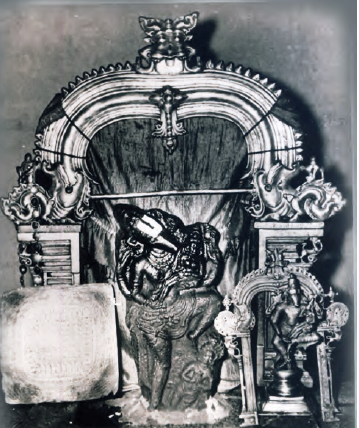Bhu Varaha Swamy Temple is Older than Venkateswara Temple
The legend says that this is older than the temple of Sri Venkateswara Swamy and hence first pooja and offerings of Naivedya are done in this temple.
Lord Srinivasa got a place to dwell here on the condition that devotees offer first worship, and first Naivedya to Varahaswamy.
After getting the place Srinivasa grew in influence and became a prominent deity. But the same practice of first worship is continued.
The first inscription naming Varaha Swamy in Tirumala is from 1379. One devotee, Tirukkalikanri dasar arranged Naivedya to this deity on that day. In the epigraph of 1380 A.D. this God has been named as ‘Varaha Nayanar’. Another epigraph of 1476 calls him ‘Jnanappiran’. The embodiment of knowledge.
Jnanamaya Kosha
One who worships this God enters the Jnanamaya Kosha. The next stage will be Anandamaya Kosha which can be automatically achieved by a Sadhaka. One epigraph was published in 1454. Salivahanasaka (AD. 1532) Manmatha Nama Samvatsara Vaishakha Poornima details the services of Tallapaka Pedda Tirumala Iyengar son of Vaggeyakara Annamacharya.
It is three copies two in Telugu and one in Tamil grantha lipi (script). These are on the walls of the entrance gopura. (Padikavali gopuram).
The inscription Vividly describes the services rendered by the Author poet in Seesa malika Vritta. This is the only inscription of pedda Tirumala Iyengar which is in Telugu. All the other inscriptions of this Sankeerthana kartha are in Tamil.
The complete seesapadyam can be found in Annamacharya Charitra (Ed. Veturi Prabhakara Sastry) that too extracted from a written manuscript. (Not from any inscription) Pedda Tirumala Iyengar renovated the dilapidated outer walls of Varaha Swamy temple and created a pradakshina pathram.
Temple Renovation
When the reconstructed temple became worn out, the Moolaberam (Moola Vigraha) was kept in the Narasimha Swamy enclosure of Venkateswara Swamy temple for 12 years. In the 20th century, Mahanth Prayagadasji Desahu renovated the temple and reconsecrated the Lord Bhu Varaha Swamy the newly constructed Garbhagriha.
The idol was at a lower level. In 1982, a Balalaya was erected the Moola Murthy was brought to a higher level above the ground and a ‘Jatabandha’ (fixing the idol strongly) was done.
Gates and Positions
In the north-west corner of Swamy Pushkarini facing the east stands Varahaswamy Temple. The Temple door open to the north. First, we come across the Mukhamandapa with its doors opening to the east. But this gateway will be opened on the special occasion of Chakrasnana (bathing the Sudarshana Chakra in the waters of Swamy Pushkarini).
From Mukha mandapa one enters Antharala of the Temple wherein one can see an inner Pradakshinapatha.
After Antharala there is a small ‘Sukhanasi’ interior chamber where the Jayavijayas are standing. Devotees have to stand in this inner chamber to see the God Bhuvaraha Swamy in the Garbhagriha, who is facing north and having Bhudevi on his left-hand side.
He stands on a pedestal two feet high. The upper two hands hold the Chakra and Sankha.
There are small idols of (Panchaloha) Srinivasa, a replica of the Moola Vigraha ‘Bhuvaraha’ and some Salagramas. But no Utsava Murthy (processional deity) comes out on the streets.
God is worshiped thrice a day according to Vaikhanasa Agama regulations. This is done earlier to that of Venkateswara swamy temple.
Pushkarini
The Pushkarini in front of the Temple is a rectangular one and is having a Madhya mandapa (Neerali mandapa). The half of the Pushkarini towards the Venkateswara swamy temple is Srinivasa Teertha. The front side of Varaha Swamy temple is Varaha teertha. Srinivasa Teertha is having wells and called by the names of dikpalakas and Saraswathy. All the Theerthas are combined to make a big pushkarini.
*Data Source: Saptagiri Magazine

